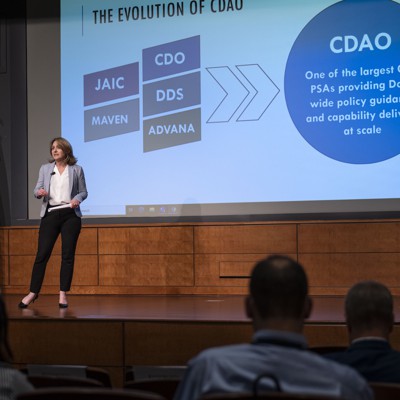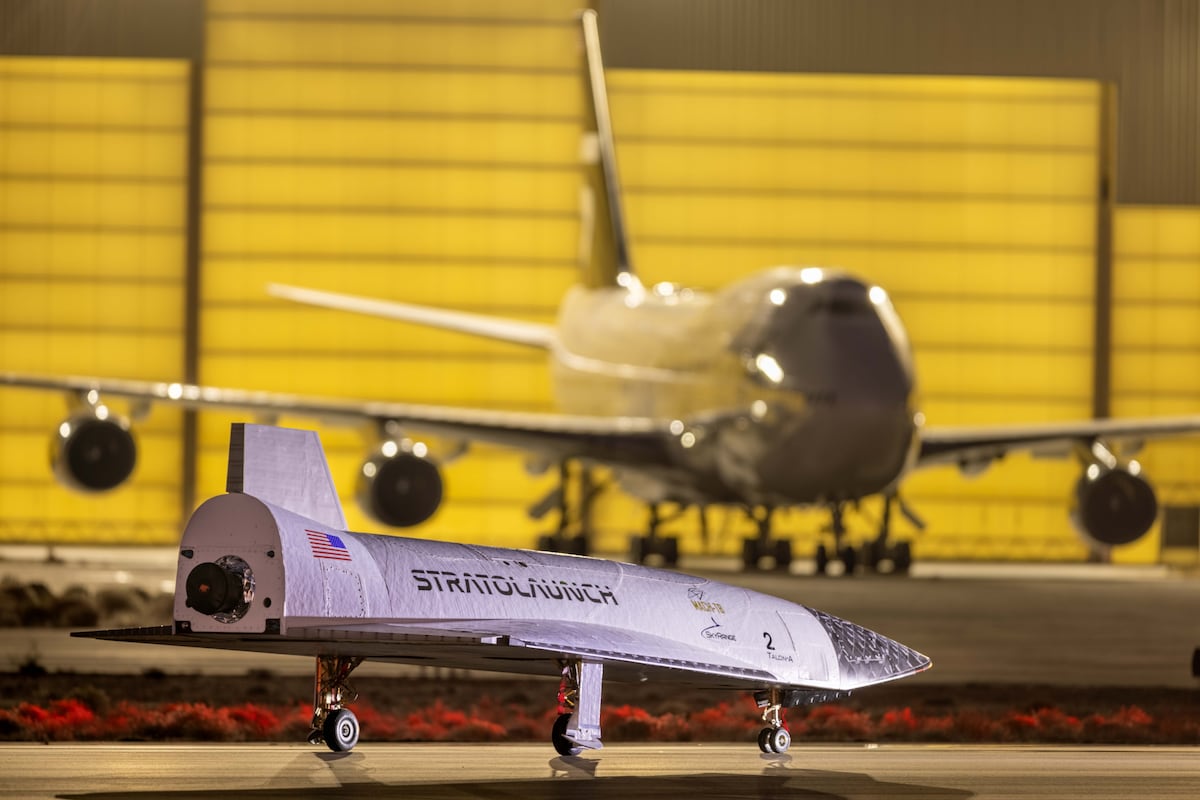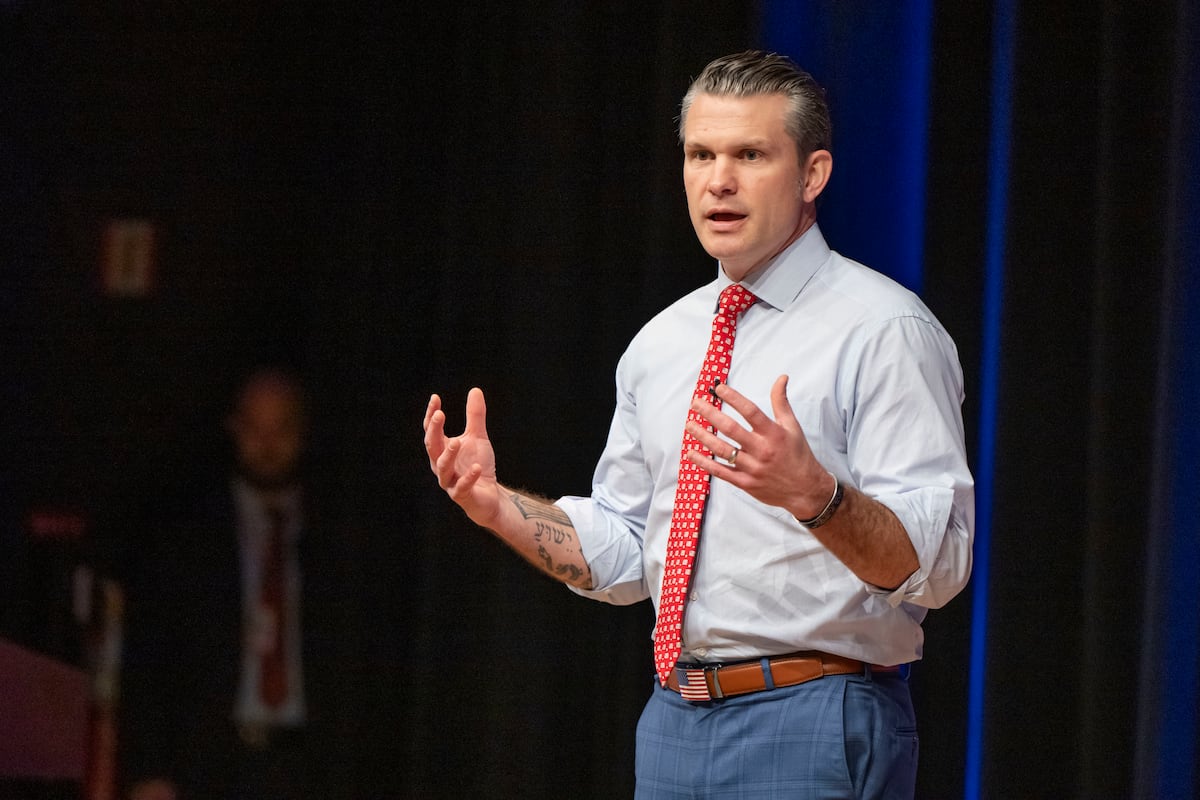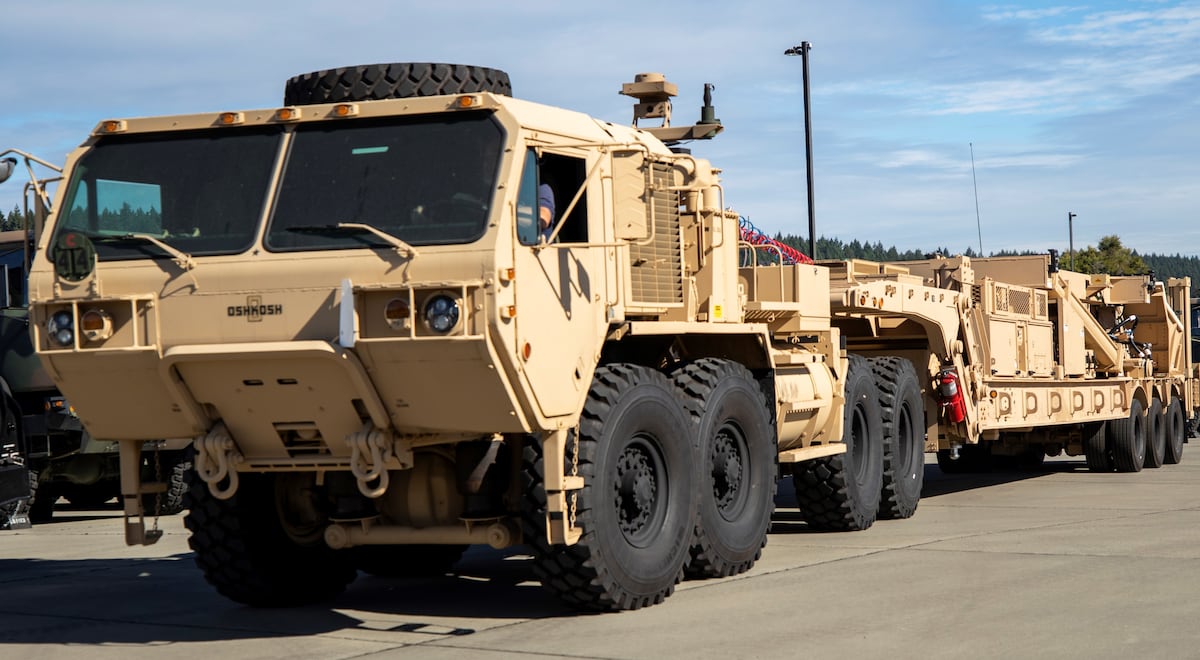Updated: Feb. 20, 11:07 p.m. ET.
As part of a broader shift in acquisition philosophy, the Pentagon may combine parts of several innovation-fostering offices into a new one focused on buying cutting-edge products from companies, a senior defense official tells Defense One.
“We are going to create an organization that is the commercial-engineering version of DARPA,” using portions of the Strategic Capabilities Office, the Defense Innovation Unit, and the Chief Digital and Artificial Intelligence Office, the official said on condition of anonymity.
In another change, the official said, the Pentagon aims to spend less on research, and what the official described as “abstractions” and more on usable arms and gear. (The official did not describe any immediate plans for DARPA, the Defense Department’s primary basic and applied research arm.)
“This [Trump] administration cares about weapon systems and business systems and not ‘technologies,’” the official said. “We’re not going to be investing in ‘artificial intelligence’ because I don’t know what that means. We’re going to invest in autonomous killer robots.”
The official said the plan is in its infancy, and very much open to change.
Another defense official said, “As the Department looks ahead toward accelerating the delivery of the most lethal, advanced technologies and capabilities to our warfighters, we are examining our current structure to best determine how to align our efforts to achieve maximum effect and efficiency. Those discussions are in the early stages, and no decisions have been made.”
The plan would need buy-in from the defense secretary and from lawmakers, as it would change Pentagon organizations, such as DIU, that receive their funding and mandate directly from Congress. It would also alter how the services procure things individually and with one another.
For instance, the CDAO currently performs a wide range of tasks, from investigating defense applications for generative artificial intelligence, to advising on policy and data frameworks. But it also procures software services and products. Those portions of CDAO that aren’t directly related to buying and building things would be moved to other departments or offices. For instance, CDAO’s work on policy would go to the Under Secretary of Defense for Policy, its work on digital talent management would become a matter of personnel or training, and so forth.
But some aspects of CDAO’s work would become more formal. For instance, the Advana effort to build a software platform to structure Pentagon data, would become a full acquisition program, the official said.
DIU would also cede procurement functions to the new entity, particularly working with service-branch program executive offices, or PEOs. The official cited DIU’s work with Army and Navy PEOs on autonomous systems, and said the new entity would put the acquisition costs mostly on the services.
“It’s gonna use PEO money, period,” the official said.
The new entity will work less with combatant commands than DIU currently does, the official said.
Outreach to combatant commands, rather than to service acquisition buyers, “creates a problem, which is none of [the tech DIU buys for soldiers to experiment with] is sustainable, and you’re competing directly with the PEOs” that are supposed to provide material to the warfighters, said the official.
But the PEOs would also see changes under the new acquisition philosophy, the official said: the consolidation of functions so that services aren’t buying “seven different flavors of [autonomous systems] that don’t work with one another.”
Defense Department leaders will take charge of certain programs, the official said.
“There are certain weapon systems where the PEOs are not to be trusted and so those will be run at a joint level. And those are joint weapon systems designed for the joint force, not for an Army battalion.”
Finally, the official said, the plan aims to put more research-and-development costs on defense contractors.
“We’re trying to change a business model from ‘the government pays $100 million for research and [the company] builds a prototype’ to more of ‘us paying a couple million dollars and industry pays $98 million and then they build a prototype’.”
One former defense official said that the idea doesn’t reflect the way program executive offices work.
“PEOs do not decide funding or requirements. Instead, PEOs by definition manage the execution of appropriated program dollars. Those dollars are appropriated by Congress and are aligned to requirements developed by senior uniformed military leaders.”
The former official also expressed skepticism about joint program offices for other key acquisition activities. Such offices “simply do not work because they hold a single service responsible for the bill and management of a joint requirement, which puts the program in tension with individual service priorities. Recognizing this, both the first Trump administration and the Biden administration invested more in Defense-wide accounts, which allows joint elements with their own budgets (such as DIU or CDAO) to meet joint warfighting needs.”But given the new Trump administration’s eagerness to change or even ignore broad regulations that the administration feels are no longer relevant, as well as the role of Congress in budget-setting, these issues may amount to little more than formalities.
A planning team will begin meeting with various organizations, including other service-specific research entities, as early as next week, the official said.. Then there will be a “campaign” to build support for the idea within the Pentagon and on Capitol Hill over the next 180 days, the official said.
Read the full article here








Leave a Reply